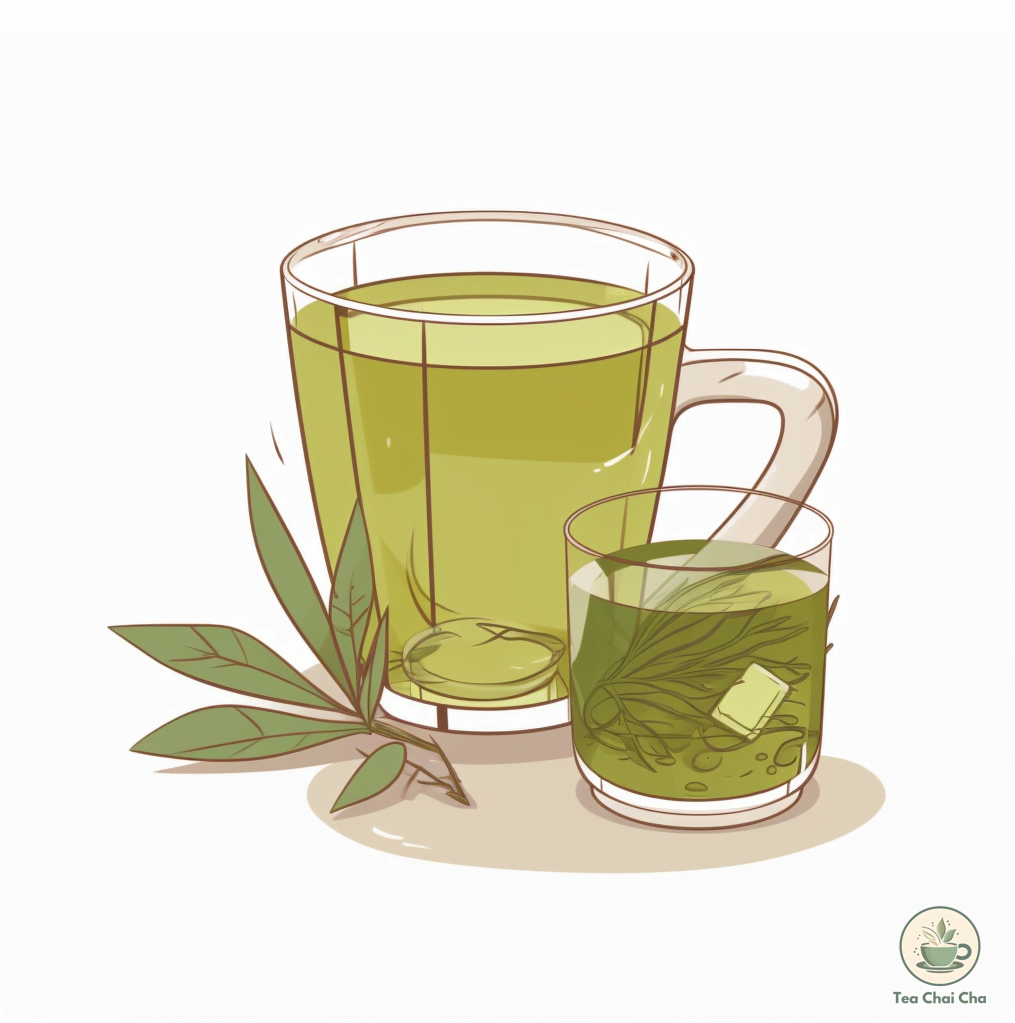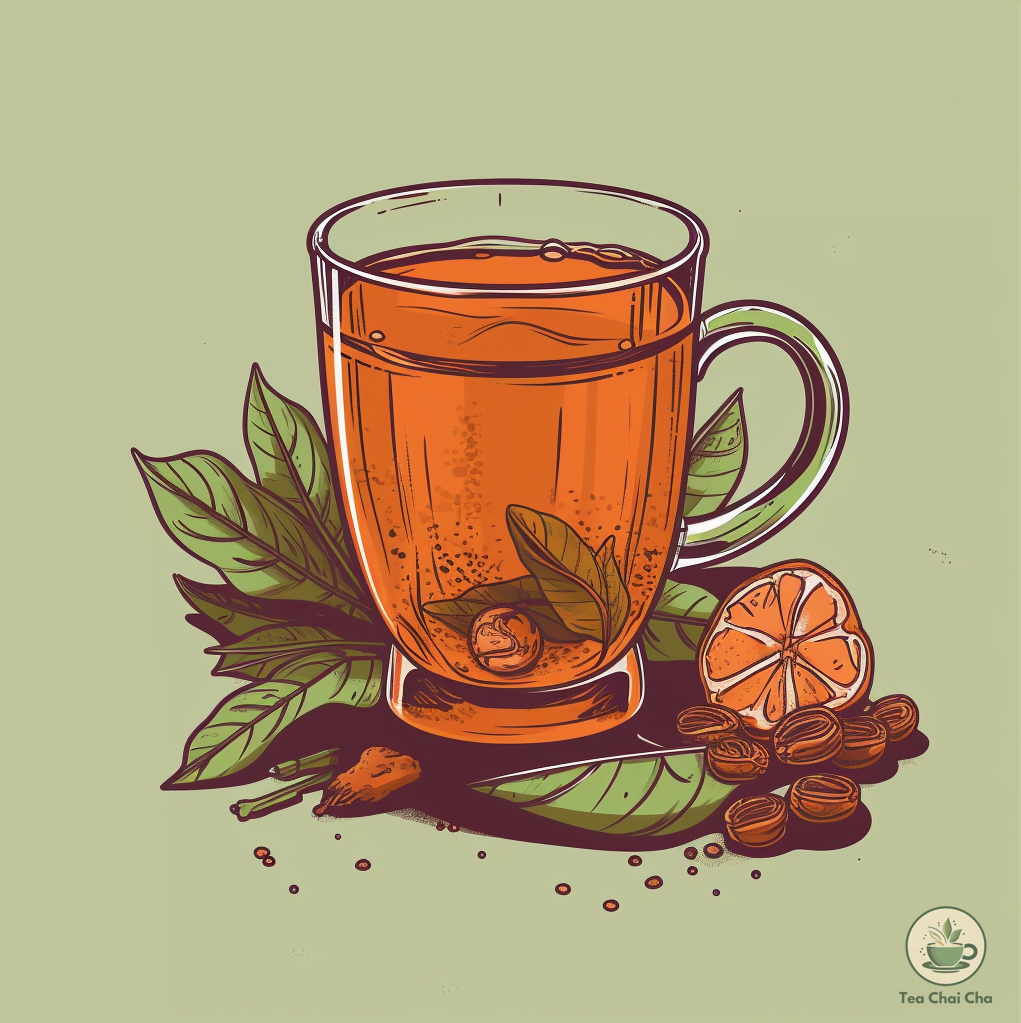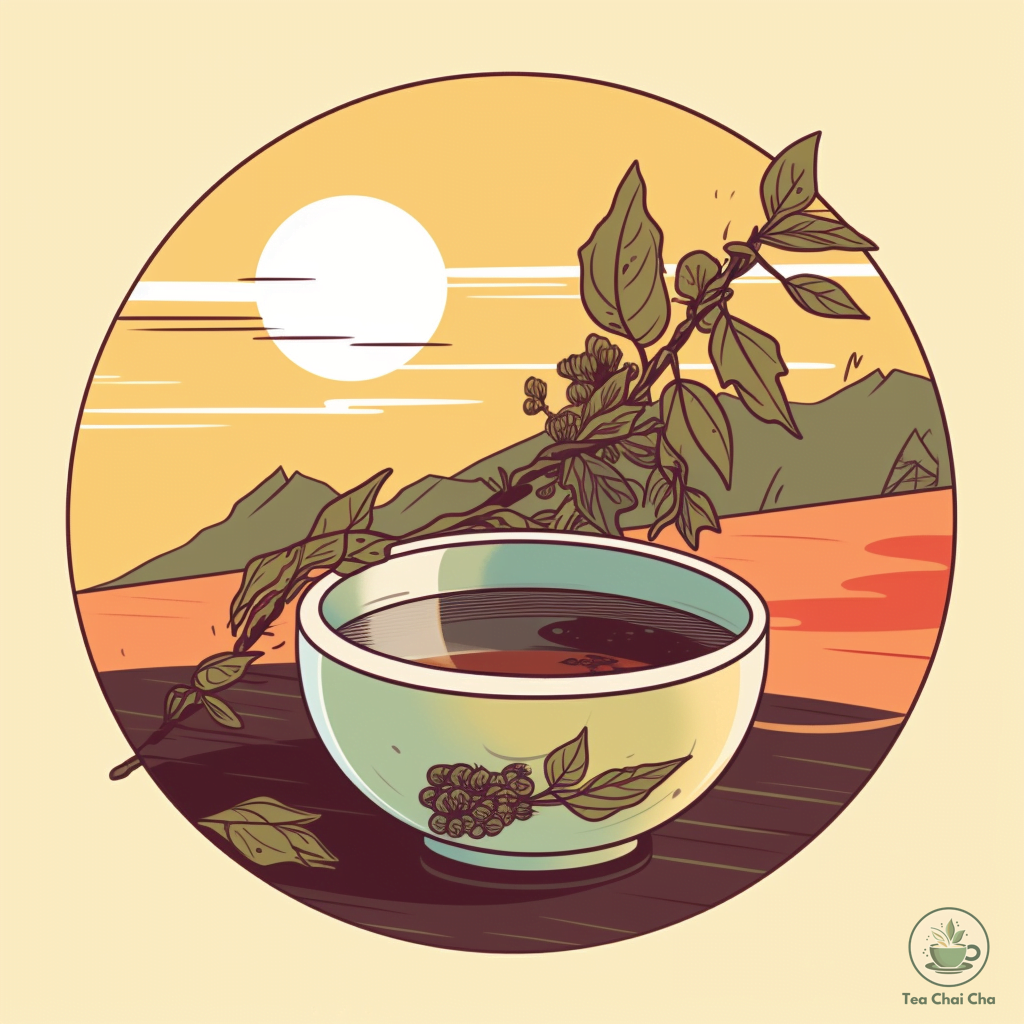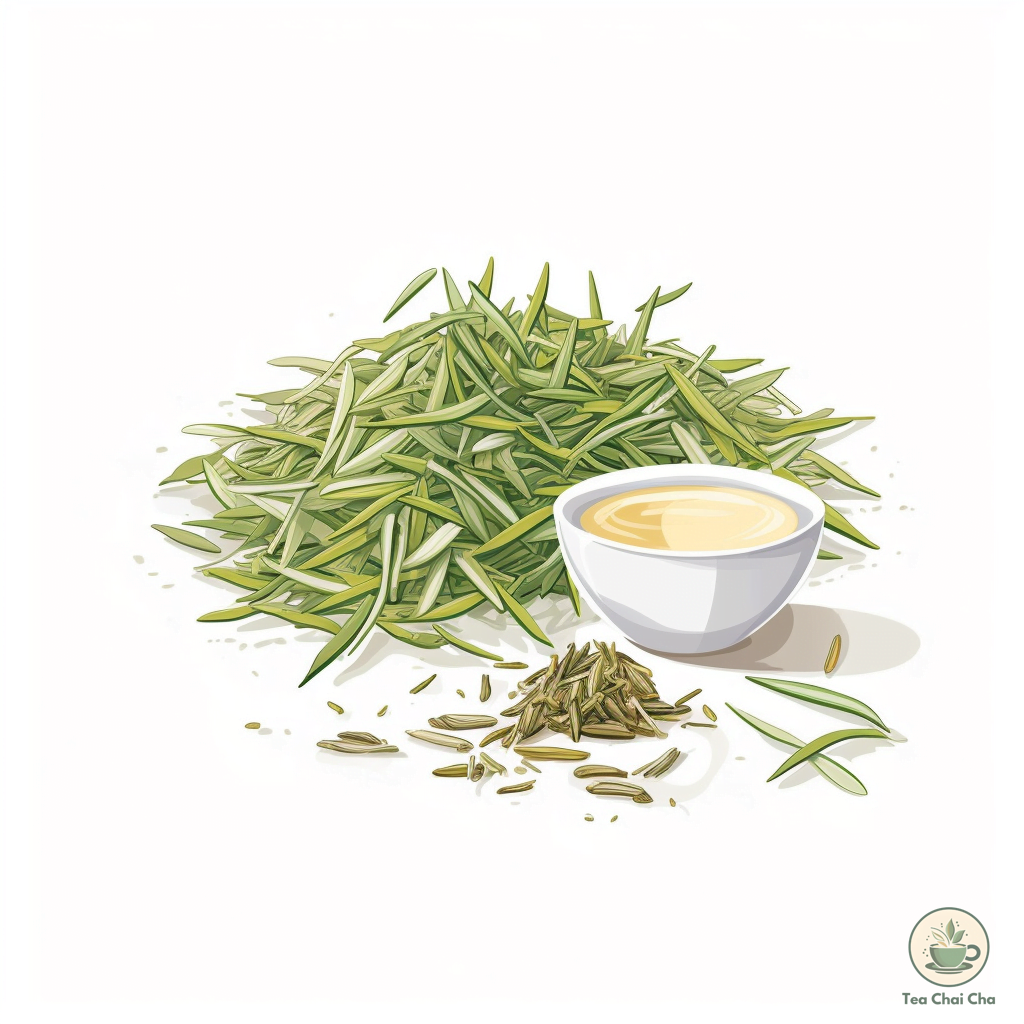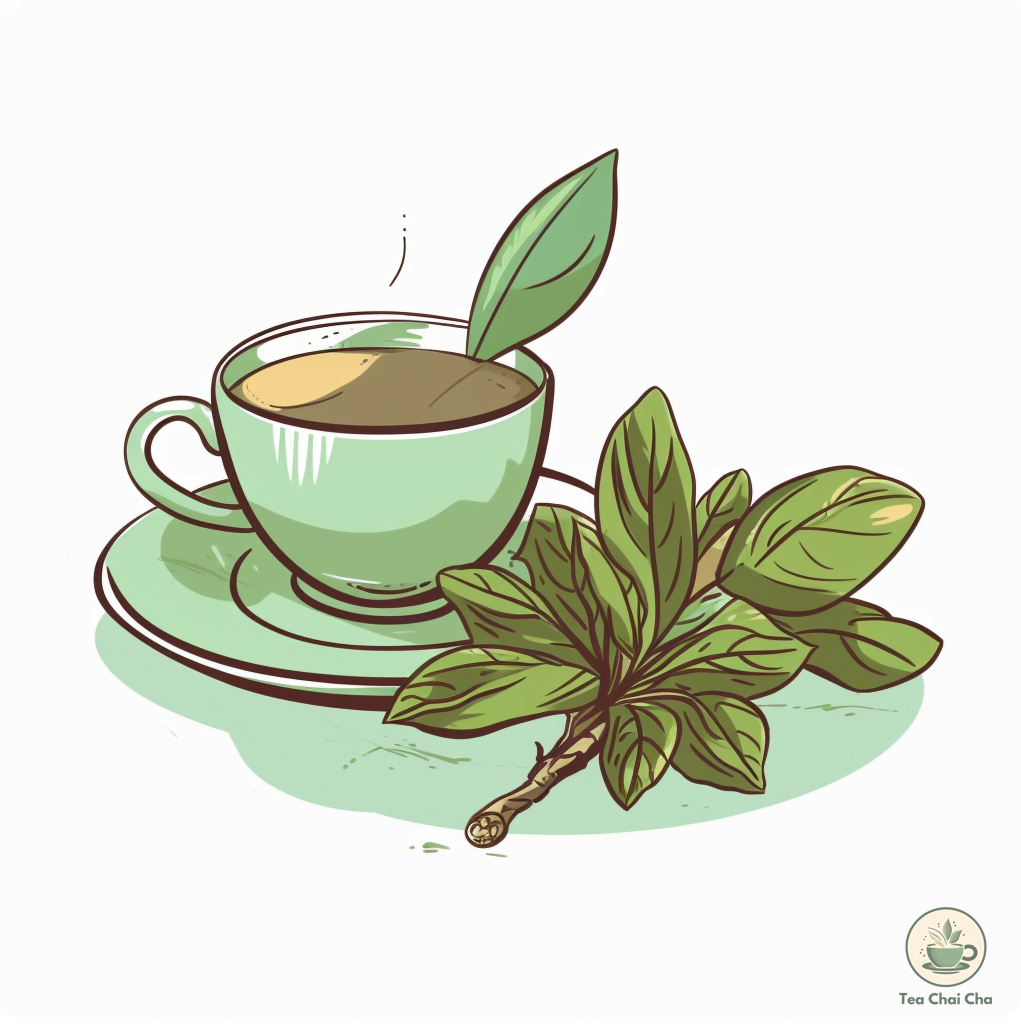Have you ever wondered about the journey of your comforting cup of tea? How do the nuanced flavors, enchanting aromas, and diverse varieties come into existence?
Today, we’ll unravel these mysteries and more as we learn about tea, a beverage cherished by cultures around the globe. Are you ready to steep yourself in knowledge? Let’s begin!
Introduction to the Different Types of Tea
The world of tea is a vast and beautiful landscape, brimming with a variety of flavors, aromas, and cultural traditions. It’s a universe where history, agriculture, and artistry meld seamlessly, giving birth to a beverage that soothes, uplifts, and revitalizes.
Whether it’s the robust, full-bodied character of a black tea, the delicate whispers of a white tea, or the soothing allure of herbal infusions, each cup tells a unique tale, bringing its drinker a step closer to understanding the essence of this millennia-old tradition.
But before we embark on the exploration of different tea types, let’s set a firm footing in the basics of tea.
Tea Types 101: The Basics
When it comes to tea, the journey starts with a single plant – Camellia sinensis. Despite the myriad of tea types we see today, almost all come from this humble shrub. The magic lies in the processing. The variations in processing methods transform the leaves, giving us different types of tea – each with unique characteristics.
Oxidation: This is the process that gives us our primary tea types. It involves exposing tea leaves to oxygen after they’ve been plucked. Green tea undergoes minimal oxidation, retaining its green hue and fresh flavor.
Black tea, on the other hand, is fully oxidized, resulting in a darker color and robust flavor. Oolong tea falls somewhere in the middle, with partial oxidation lending it a character all its own.
Processing: The steps that follow oxidation, including rolling, shaping, and firing, also contribute significantly to the final tea type. These processes help create the diverse spectrum of teas we know and love today.
Different Tea Types
Now that we’ve touched upon the basics, let’s journey into the verdant realm of prominent tea types.
Green Tea
Green tea, a symbol of tranquility and wellness, is cherished by tea enthusiasts for its fresh, grassy flavor and numerous health benefits. Renowned for its minimal oxidation, green tea stands as a testament to the adage – less is more. But what’s the story behind this calming brew?
History of Green Tea
Emerging from the heartland of China, green tea has been gracing teacups for medicinal and leisurely purposes for nearly 3000 years. Over centuries, it has spanned continents and cultures, carving a niche for itself in the global tea landscape.
From the traditional Chinese tea ceremony to the contemporary matcha latte trend, green tea has seamlessly woven itself into the fabric of societal rituals and routines.
Also read – The Art of Tea Ceremony
Characteristics of Green Tea
Green tea, with its minimally oxidized leaves, is a vibrant testament to the beauty of restraint. The leaves often exude a lively green hue, reflecting their freshness and minimal processing.
The resulting brew can exhibit a color palette ranging from a subtle, almost translucent hue to a deeper verdant green, depending on the tea variety and brewing specifics.
The flavor profile is predominantly fresh, grassy, and vegetal, although the nuances can significantly vary based on the tea’s origin and processing.
Brewing Methods for Green Tea
Brewing green tea is an art, with every detail mattering in crafting the perfect cup. The water temperature for green tea should ideally be lower than that of its black or oolong counterparts, ranging between 160°F to 180°F (70°C to 80°C).
The steeping time is typically brief, hovering around 1 to 3 minutes. Care should be taken not to over-brew, as this could tip the taste towards bitterness, overshadowing the tea’s innate fresh and grassy notes.
Flavor Profile of Green Tea
Every sip of green tea is a burst of freshness. The predominant flavor notes are grassy and vegetal, offering a refreshing palate cleanse. Some teas may also have hints of seaweed, giving them a slightly savory or ‘umami’ character.
Depending on the specific variety and processing, subtle notes of sweetness, floral, or nutty flavors may also make an appearance. Green tea is versatile, offering a spectrum of flavors that captivate the senses in every brew.
Different Varieties of Green Tea
Diversity is the spice of life, and green tea certainly takes this to heart. Each variety of green tea presents a unique tasting journey, from the vibrant grassy notes of Sencha to the full-bodied umami flavor of
Matcha or the sweet and nutty profiles of China’s renowned Longjing tea. Whether you’re a seasoned tea connoisseur or a curious beginner, the world of green tea provides endless opportunities for discovery and delight.g adventure for every tea lover.
Black Tea
As we continue our exploration of the tea universe, we find ourselves immersed in the rich, dark realm of black tea.
Known for its robust character and high caffeine content, black tea is the most widely consumed type of tea around the globe, with countless varieties offering a host of complex flavors and aromas.
Whether enjoyed as a breakfast staple, an afternoon pick-me-up, or an evening treat, black tea holds a cherished spot in many a teacup.
History of Black Tea
The history of black tea is a tapestry woven with tales of trade, exploration, and cultural exchange.
Believed to have originated in China during the late Ming dynasty, black tea, or “red tea” as it’s known in China due to the color of the brewed liquor, quickly gained popularity for its robust flavor and longer shelf-life.
Merchants and explorers carried it along the ancient Silk Route, introducing it to cultures and markets worldwide.
Characteristics of Black Tea
Black tea is distinctive for its full oxidation, a process that gives it its characteristic dark color, strong flavor, and higher caffeine content. The tea leaves, once processed, appear black or dark brown.
These are often robust and twisted or broken into smaller pieces depending on the type of black tea.
The brewed liquor ranges in color from amber to dark brown and carries a warm, aromatic fragrance that’s enticing and comforting.
Brewing Method for Black Tea
The art of brewing black tea involves precise control over temperature and steeping time.
Generally, black tea requires boiling water, with a temperature of around 200-212°F (95-100°C), and a steeping time of 3 to 5 minutes.
Oversteeping can result in a brew that’s too strong or bitter, so it’s important to monitor the process.
However, the exact brewing method can vary depending on the type of black tea; for instance, some stronger, full-bodied varieties may benefit from a longer steeping time.
Flavor Profile of Black Tea
Black tea offers a taste of tradition with its robust and full-bodied flavor profile.
It’s typically richer, more astringent, and bolder than its less oxidized counterparts.
The flavors can range from malty or smoky to sweet or fruity, depending on the type and quality of the tea.
It’s this rich complexity that endears black tea to enthusiasts and casual drinkers alike.
Different Varieties of Black Tea
Black tea encompasses a vast spectrum of varieties, each with its unique character. Indian teas like Assam are known for their robust, malty flavor, while Darjeeling offers a delicate floral taste with muscatel undertones.
Chinese black teas include the smoky Lapsang Souchong and the cocoa-like Keemun.
Then there’s Ceylon tea from Sri Lanka, known for its bold, brisk flavor, and Earl Grey, a black tea famously flavored with bergamot oil.
The exploration of black tea is truly a global journey that tantalizes the taste buds.
Also read – The History of Tea
Oolong Tea
As we delve further into the tea universe, we encounter the exquisite balance of oolong tea.
Striking a delightful middle ground between green and black teas, oolong, with its semi-oxidized nature and broad flavor profile, epitomizes the artistry and craftsmanship inherent in tea-making.
History of Oolong Tea
Oolong tea, or “wulong,” which translates to “black dragon” in Chinese, finds its roots in the Fujian province of China.
With a history spanning centuries, oolong is deeply interwoven with Chinese culture and traditions.
The unique processing method of oolong, which involves a precise control over the level of oxidation, developed over centuries, resulting in a tea that is as rich in history as it is in flavor.
Characteristics of Oolong Tea
Positioned between the green and black tea spectrum, oolong tea undergoes partial oxidation, ranging from 20% to 80%.
This unique oxidation level endows oolong with its distinctive character, boasting the freshness of green teas and the robustness of black teas.
The appearance of oolong tea leaves varies significantly, from tightly rolled balls or “pearls” to long, curled leaves, each unfolding beautifully when brewed.
Brewing Methods for Oolong Tea
Brewing oolong tea is an art designed to capture its complex character.
The optimal water temperature typically falls between 180-200°F (82-93°C), and the steeping time can range from 3 to 5 minutes.
However, these parameters can vary depending on the specific oolong variety.
Some traditional methods, like Gongfu Cha, involve multiple short steeps to truly capture the unfolding flavors of oolong.
Flavor Profile of Oolong Tea
The flavor profile of oolong tea is as diverse as its level of oxidation.
Lightly oxidized oolongs can be floral and creamy with a hint of fresh grassiness reminiscent of green teas, while heavily oxidized oolongs can possess robust, woody, and fruity notes akin to black teas.
Regardless of its place on the oxidation spectrum, an oolong tea often offers a pleasant lingering aftertaste known as the ‘throat charm’ or ‘hui gan’.
Different Varieties of Oolong Tea
Oolong tea presents a vast array of varieties, each with a unique flavor profile. Chinese oolongs, like the buttery Tieguanyin or the dark, fruity Da Hong Pao<span style=”font-weight: 400;”>, are renowned worldwide.
Taiwan, known for its high mountain oolongs, offers teas like the floral and creamy Alishan or the honey-like Dong Ding.
Each sip of these diverse oolongs offers an insight into the delicate balance and intricate artistry of tea-making.
Also read – Tea-producing Regions Worlwide
White Tea
Steering our tea journey towards subtler shores, we encounter the delicate elegance of white tea.
Known for its minimal processing and gentle flavor, white tea is a true celebration of simplicity and tradition, offering a soothing respite in every sip.
History and Origin of White Tea
White tea, believed to be the oldest type of tea, traces its roots back to the ancient tea gardens of China’s Fujian province.
The tea is named for the white, silvery hairs on the young tea buds.
Traditionally, it was a luxury reserved for royalty, revered for its delicate flavor and association with longevity and health.
Characteristics of White Tea
The hallmark of white tea lies in its minimal processing. The leaves are simply plucked and allowed to wither naturally, often under the sun.
This method preserves the leaf’s natural state, leading to a tea that’s as close to the raw tea leaf as possible.
White tea leaves, when dry, have a light, silvery appearance and yield a pale, often golden brew.
Brewing Methods for White Tea
The delicate nature of white tea calls for gentle brewing methods. Water temperature should be below boiling, around 170-185°F (76-85°C), to avoid scorching the leaves.
The steeping time ranges from 1 to 5 minutes, with lighter varieties requiring a shorter brew time.
The aim is to preserve the tea’s delicate nuances and prevent over-extraction, which can lead to bitterness.
Flavor Profile of White Tea
White tea offers a gentle, nuanced flavor profile. It’s often described as floral, light, and subtly sweet, with a silky mouthfeel. Some varieties may also present fresh, fruity notes.
Unlike the robust character of black tea or the grassiness of green tea, white tea provides a mellow, soothing cup that’s inviting and refreshing.
Different Varieties of White Tea
There’s a spectrum of delicacy to explore within the world of white tea.
From the renowned Bai Hao Yin Zhen (Silver Needle), celebrated for its delicate, sweet flavor and elegant needle-like shape, to the fuller-bodied Bai Mu Dan (White Peony) that presents a slightly stronger, yet still subtle, taste profile.
Each variety offers a unique interpretation of white tea’s delicate elegance.
Herbal Teas
Leaving the traditional realm of Camellia sinensis, we find a world teeming with colors, aromas, and tastes – the vibrant universe of herbal teas.
From calming chamomile to invigorating peppermint, herbal teas offer an inviting diversity that caters to every palate and mood.
An Introduction to Herbal Teas
Herbal teas, also known as tisanes, step outside the world of traditional tea and embrace an extensive array of plants, each offering unique flavors and benefits.
These infusions can include various plant parts such as leaves, flowers, fruits, seeds, roots, and bark, each imparting its unique character to the brew.
Different Types of Herbal Teas and Their Characteristics
The universe of herbal teas is rich and varied. Here are just a few of the many types you might encounter:
Chamomile: Known for its calming properties, chamomile tea offers a soothing, apple-like flavor that’s perfect for winding down.
Peppermint: With its refreshing and invigorating flavor, peppermint tea can uplift the senses and aid digestion.
Hibiscus: Celebrated for its vibrant color and tangy, berry-like flavor, hibiscus tea is a rich source of vitamin C.
Ginger: Spicy and warming, ginger tea can help soothe the stomach and ward off colds.
Rooibos: Naturally sweet and slightly nutty, this caffeine-free tea from South Africa is high in antioxidants.
Brewing Methods for Herbal Teas
Brewing herbal teas involves extracting the best flavors and benefits from the chosen plants.
Most herbal teas are brewed with freshly boiled water and steeped for 5-10 minutes, though the exact parameters can vary based on the plant used.
Some, like roots or seeds, may benefit from longer brewing or even simmering to fully release their flavors and beneficial compounds.
Flavor Profiles of Popular Herbal Teas
From the soothing sweetness of chamomile to the sharp zestiness of ginger, each herbal tea presents a unique flavor profile.
Mint offers cool freshness, hibiscus a tart zing, while rooibos imparts a sweet, slightly earthy flavor.
This symphony of sensations allows for endless variety and enjoyment, making each cup of herbal tea a unique experience.
The Lesser-Known Tea Types
Diving deeper into the tea universe, we find treasures that, while less known, offer exquisite experiences. Among these are the golden mystery of yellow tea and the ancient heirloom of dark (Puerh) tea.
Yellow Tea and Its Uniqueness
Yellow tea, often considered a sub-category of green tea, takes its name from the unique yellow hue of the brewed liquid. Originating from China, yellow tea undergoes a slightly longer oxidation process than green tea, which imparts a richer, mellower flavor.
The process, called “men huan” or “sealing yellow“, is a careful art that requires the tea master’s skill and attention.
Dark (Puerh) Tea and Its Legacy
Puerh, a variety of fermented tea from China’s Yunnan province, is an ancient legacy. There are two main types: raw (Sheng) Puerh, which is allowed to age naturally, and ripe (Shu) Puerh, which undergoes a special fermentation process.
The flavor of Puerh can evolve dramatically over time, adding a unique dimension of complexity and depth.
Purple Tea and Its Beauty
Purple tea is a variety of tea that is literally purple in color due to the high presence of anthocyanins, the same type of flavonoids found in blueberries and pomegranates.
This unique tea, primarily grown in Kenya, is not only striking in appearance but also offers potential health benefits due to its high antioxidant content. Its taste is often described as fresh and sweet with subtle notes of plum.
Appreciating the Quality of Tea
Understanding and appreciating the quality of tea enriches the tea-drinking experience. It influences not only the flavor and aroma but also the impact of tea on our health and society.
The Impact of Quality on Tea: Flavor, Aroma, and Experience
The quality of tea is determined by various factors including the tea variety, growing conditions, processing methods, and freshness. High-quality teas offer a harmony of flavor, aroma, and mouthfeel, leading to an enjoyable and memorable tea-drinking experience.
Ethical Tea: Understanding Organic and Fair Trade Certification
An understanding of ethical tea practices is essential in today’s tea market. Organic certification ensures the tea is grown without synthetic pesticides and fertilizers, while Fair Trade certification ensures that farmers and workers are paid fair wages and work under safe conditions.
Global Tea Cultures
Tea, while a global beverage, has distinct practices and traditions in different cultures. These cultural nuances add a fascinating layer to the tea-drinking experience.
Tea Around the World
From the elaborate Japanese tea ceremony to the spiced chai of India, tea cultures around the world offer a glimpse into diverse traditions and practices. Each culture imparts its unique touch, making every cup of tea a journey around the world.
Unique Tea Practices and Their Cultural Significance
Tea practices are deeply entwined with the cultural fabric of many societies. For instance, the Chinese Gongfu tea ceremony emphasizes mindfulness, while the British afternoon tea reflects social elegance.
Conclusion: Different Types of Tea
Our journey through the tea types has taken us from the basics to the nuances, from well-known varieties to lesser-known gems. We’ve delved into brewing techniques, flavor profiles, and even global tea cultures.
As we conclude, the encouragement is for continued exploration. Tea is a personal experience, and each one of us has the opportunity to unravel and create our unique tea narratives.
References
- Heiss, Mary Lou, and Robert J. Heiss. “The Story of Tea: A Cultural History and Drinking Guide.” Ten Speed Press, 2007.
- Zhang, Jinghong. “Puer Tea: Ancient Caravans and Urban Chic.” University of Washington Press, 2013.
- Fischer, Rosa. “The Tea Enthusiast’s Handbook: A Guide to Enjoying the World’s Best Teas.” Ten Speed Press, 2010.
- World Tea News. “Kenyan Purple Tea.”
- Food and Agriculture Organization of the United Nations. “Tea: cultivation, processing, and classification of tea.”

